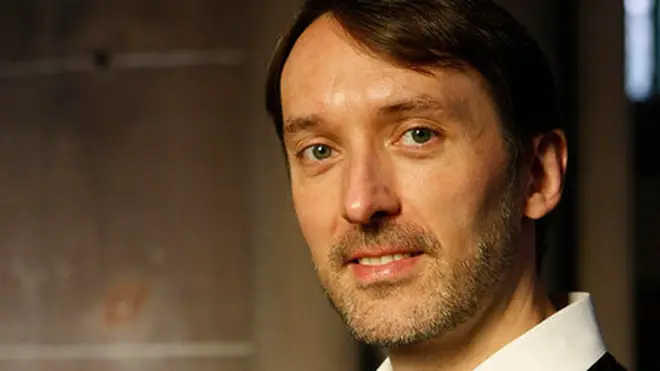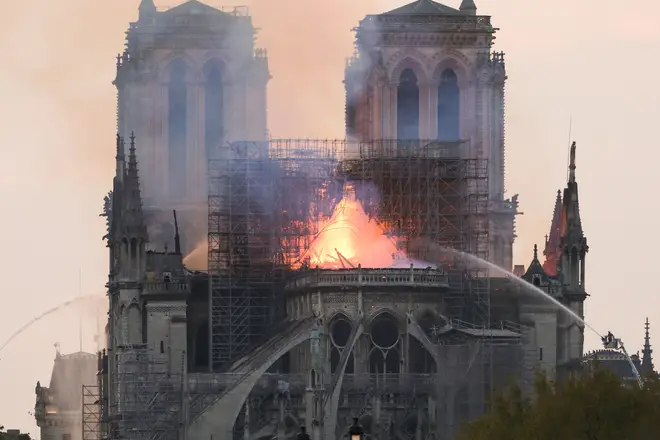Notre-Dame fire: more could be done to prevent disasters like this, says organist Olivier Latry
1 August 2019, 13:03 | Updated: 20 January 2020, 16:28

Notre-Dame Cathedral’s head organist speaks exclusively to Classic FM about what we can learn from April’s devastating fire.
On Monday 15 April a fire broke out at Notre-Dame Cathedral, razing the structure to the ground and sending waves of devastation through Paris and around the world.
“Everybody remembers where they were when they heard about the worst things that have happened on the planet,” says Notre-Dame head organist, Olivier Latry.
“For example, everybody knows where they were the minute they heard about the September 11 terrorist attacks. It is the same, of course, for Notre-Dame.”
The news of the fire, which was accidental, was especially devastating for Latry as someone whose life and work has evolved around the cathedral on a daily basis since the 1980s.
“I was flying to Vienna for a concert and received a text from a friend who lives near the cathedral. He sent me a picture saying ‘Olivier, Notre-Dame is on fire.’ I said, ‘what?’
“He sent me another picture ten minutes later and of course the fire was much bigger.”

How did the Notre-Dame fire start?
The fire occurred at a time when building works were being undertaken in the gothic cathedral’s roof and was the kind of accident that, according to Latry, “could have been prevented”.
“I read an article just a few days ago that says seven accidents like this have happened in France during restorations of buildings,” Latry says, speaking exclusively to Classic FM.
With fires being a fairly obvious risk for old buildings like the Notre-Dame, Latry wonders why we can’t learn from what has happened in the past.
“It happened in Nantes Cathedral around 30 years ago because of works in the roof, exactly like Notre-Dame,” he explains.
“Think about the Teatro La Fenice fire in Venice and Hotel Lambert fire in Paris. There are many places like this where there is work happening, someone puts out a cigarette or forgets to let a welding gun to cool down, and there is a disaster.”

For Latry, wonderful heritage buildings require and must have proper surveillance undertaken by people with knowledge of, and respect for, their historical significance.
“A building like this needs surveillance and knowledgeable people walking around to ensure everything is okay.
“At Notre Dame there was just one man, working from seven in the morning, and he didn’t know anything about the cathedral. It was just his second day on the job, and that was not enough. This is what happens, just to save money on security.”
Does Latry think there will be learnings from the Notre-Dame fire?
“I hope [so],” he says. “But I don’t know that it will not happen somewhere else because people do not care.”
What damage was done in the Notre-Dame fire?
The Notre-Dame’s roof and main structure was severally damaged in the fire. Luckily, though, the wonderful organ – which is thought to have been constructed in the 13th century – didn’t sustain too much damage.
“The organ has no fire, heat or real water damage.” Latry tells us. “Just water in one or two pipes.”
The worst thing, he says, is the dust that entered the organ’s pipes.
“We have to remove the organ to clean it and during that time, all of the walls of the cathedral will be cleaned and decontaminated.”
Watch: Crowd sings ‘Ave Maria’ outside burning Notre-Dame Cathedral
Why is the Notre-Dame Cathedral so beloved around the world?
Notre-Dame de Paris (‘Our lady of Paris’) is known and loved around the world, in part due to its age – construction on the Gothic cathedral began in 1190 – and because of its status as one of the symbols of Paris. But also likely because of its place in popular culture.
Victor Hugo’s 1831 novel The Hunchback of Notre-Dame cemented its place in global consciousness, and that was elevated through stage, film and television adaptations and especially with the story’s 1996 Disney treatment.
“We are attached to the Notre-Dame because of course it’s a symbol of Paris, along with the Eiffel Tower, but also because it’s connected with events that happen during a life,” says Latry, highlighting the constancy of such familiar landmarks.
“In life you know your parents are going to die one day, it’s the normal way. So you are prepared, as much as you ever can be. But who could imagine a building like the Notre-Dame disappearing? It has always been there and seems that it will be there forever. That’s why when the fire happened, we were all so shocked.”

Read more: France calls for architects to design a new spire for Notre-Dame
And what, for Latry who has worked there since the 1980s, makes the Notre-Dame so special?
“I would go to Notre-Dame in the evenings to practice after a day of teaching or whatever, so I’m usually pretty tired,” he tells us.
“But I stand at the front or the back of the building, and look at the cathedral for five or ten minutes. And it’s like receiving energy. I can then practice for four hours, it’s incredible!
“It’s a kind of magic and something people can really feel. We can feel it also, not just with the energy, but also the presence tranquil – the quiet power – of the building. You can be confident with the building and the balance between everything is so well done.”
How long will the Notre-Dame Cathedral repairs take?
Olivier Latry won’t be able to play the cathedral’s world-famous symphonic organ for four years, due to the damage caused by the Notre Dame fire on 15 April 2019.
And what now? “Now its all about keeping awareness going,” Latry says.
“It’s very important to speak about Notre-Dame. In the first few days, everyone was speaking about the fire and offering to give money and help to restore it. But now it’s like Notre-Dame never burned. Everybody could easily forget what happened, and I think it’s important not to forget.”
According to Latry, of the many people who said they would donate money for the restoration, only about 10 per cent have done so.
“Me, my fellow organists and the cathedral’s choir put on regular concerts to raise awareness and try and remind people about what happened at Notre-Dame.”


































